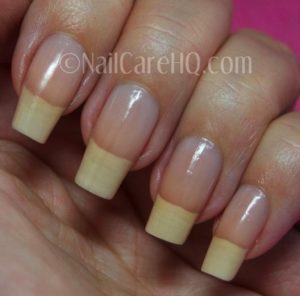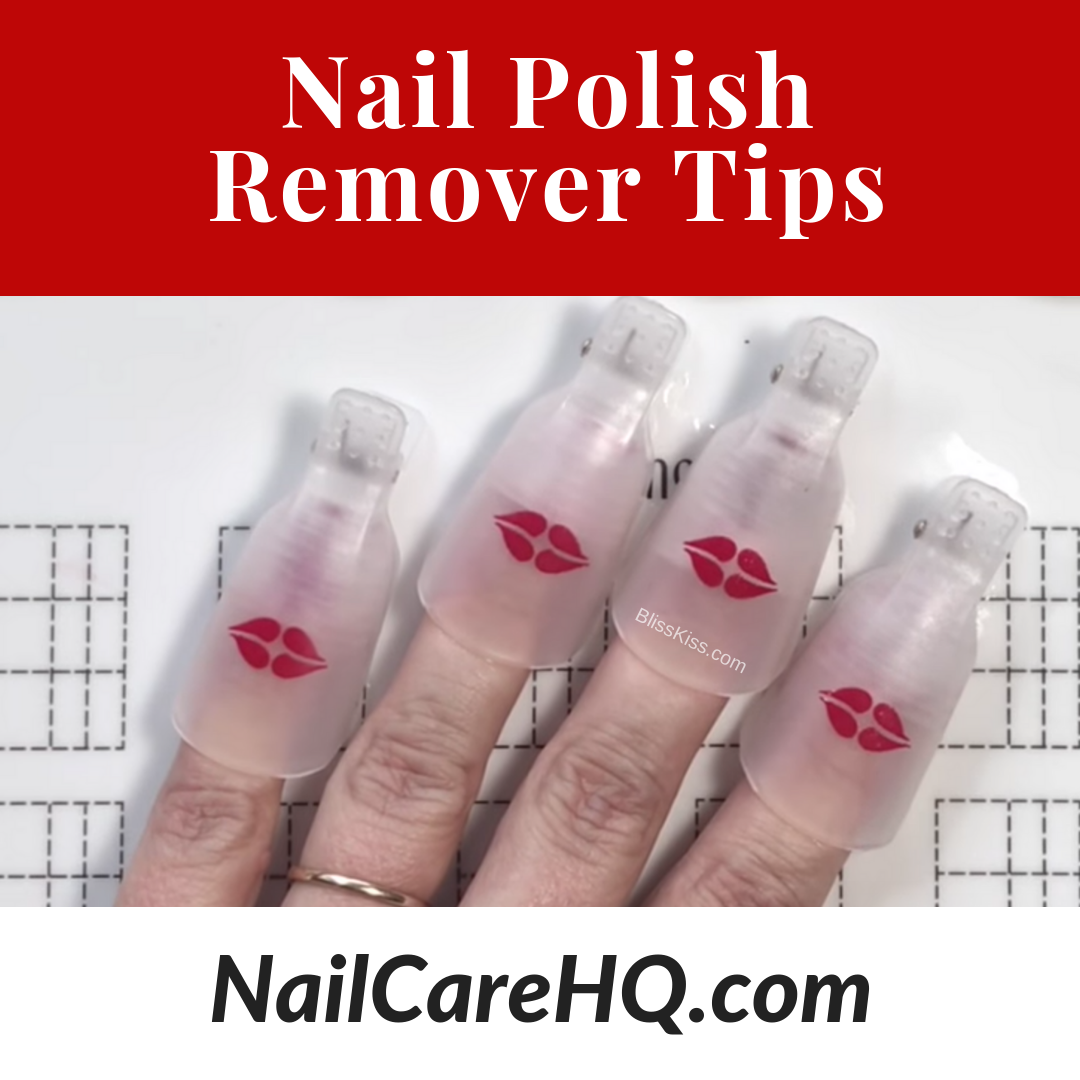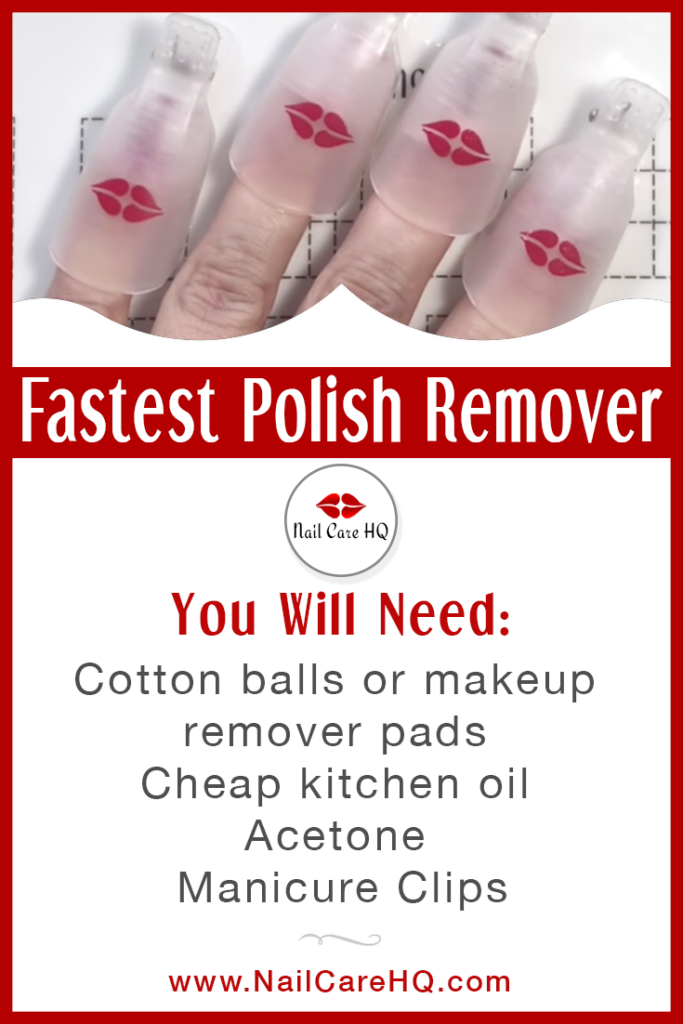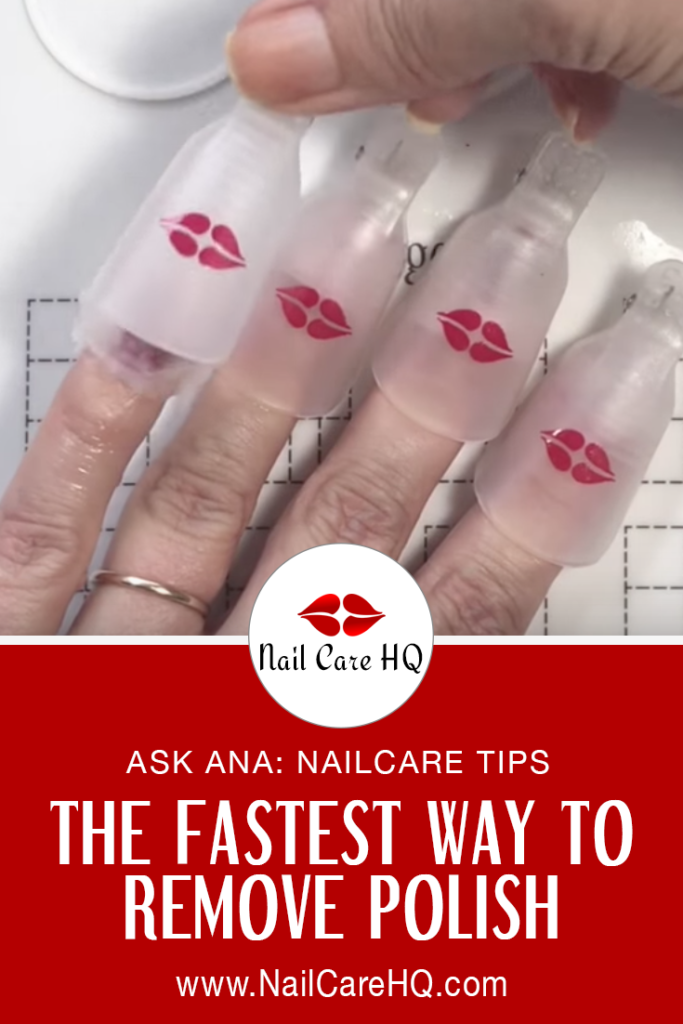NAIL POLISH REMOVER
Are you frustrated with tedious polish removal? Especially gel polish removal?
Are you tired of staining your nails yellow?
In this article, you’ll learn:
- Why scrubbing is the worst way to remove polish
- How warm acetone works faster
- How the Soak and Swipe™ method can reduce long-term yellow staining from polish
The Need For Speed
In today’s article, I’m going to share with you that there is a better way!
Trust me, this is one of those things that will change your life forever.
Yep. Nail polish removal just got way easier!
Besides, using a peel off base coat I’ve discovered that the fastest way to remove polish is using my Soak and Swipe™ method.
Some of us don’t want to use a peel off basecoat. If you’re busy like me, you want your manicure to last as long as possible without chipping.
This is obviously a desire for many of us since the new lines of polishes are touting up to 7-10 days of glossy wear.
See It In Action
For those of you ready to start before even finishing this article, here is my quick video tutorial and the written directions. I’ll explain how and why this technique is so amazing later in the article.
What You Need:
- Cotton balls or makeup remover pads
- Cheap kitchen oil
- Acetone
- Manicure Clips
How To Start:
- Cut cotton makeup pads into quarters or unroll a cotton ball into a long strip and cut into nail sized pieces.
- Apply cheap kitchen oil to your skin up to first knuckle. This helps minimize the drying effect acetone has on the skin.
- Thoroughly saturate one piece of cotton with acetone. You want it almost dripping.
- Apply cotton to nail
- Apply manicure clip, and press firmly closed. This helps increase the warmth of the acetone.
- Continue the process with remaining 4 fingers.
How To Finish
- Check the first nail. Do you see the polish getting pulled into the cotton? Regular polish will dissolve quickly. Glitter and gel polishes will take longer to dissolve.
- Remove the clip.
- Saturate another piece of cotton and press it on the cotton on your nail. With firm pressure, slide the cotton off from cuticle line to tip of nail. The polish should swipe right off. It’s a total game changer! I can already hear you giggling at how fast that worked.
- Continue with remaining fingers.
- Repeat the process on the other hand.
Why I Love This Technique
Staining
Color in polish is created with different dyes and pigments. Some polish companies use cheaper pigments that can stain the nail plate. I can also attest to using the salon brands and ending up with nails stained bright blue,  purple, or pink.
purple, or pink.
When you experience yellow staining over multiple manicures, that’s because of the compounding effect of removing polish.
When this happens to me, I can see nice transparent nail growth past my cuticle line and the yellow staining deepens as the nail becomes the free edge.
In the photo to the right, you can see what I mean. See how the nail is nice and transparent near the cuticle line, but it gets more stained as it goes toward my tips?
That’s just staining from polish.
Scrubbing
When the lacquer has hardened on your nail plate, the pigments are trapped in the resins. What happens when you are scrubbing to dissolve the lacquer? Those pigments are released from the resin.
Ok, so that’s not such a big deal. We can live with that. Right?
But what are you doing when you scrub? You’re driving the pigments into the top surface layers of the nail plate.
Besides the fact that scrubbing takes a long time and sucks the oil out of your nail plate, you can see it’s just not a great option.
Warming Acetone
In Doug Schoon’s book Nail Structure and Chemistry, he says that “nail enhancements will swell and break apart more quickly if the solvent is slightly warmer than body temperature. Slightly warming product removers/solvents can significantly reduce product removal time…Warming solvents should be done with great care and caution!
Many solvents are highly flammable, including acetone and alcohol. To safely warn the solvents, place a partially filled plastic bottle containing the solvent under hot running water. Never warm solvents on a stove, in a microwave, or with an open flame.
Most salon solvents are far too flammable and may catch fire. Also loosen the cap so that pressure doesn’t build up in the bottle, causing it to crack or burst open. Finally, cover the dish and hand with a damp cloth while soaking to reduce vapors in the air.”
The takeaway from this is; don’t blow up your house! You’re risking your safety and perhaps even life when warming highly flammable solvents like acetone. It’s a hazardous task and I don’t recommend it.
So, how perfect is this Soak and Swipe ™ technique?
The clips warm the acetone and covers it to reduce vapors in the air. Yay!
Why Acetone?
Doug also says, “why do some nail technicians avoid acetone? Probably because they’ve heard untrue things about this beneficial substance. What is the truth about acetone? Acetone is one of the most important solvents in the world….Just because a chemical is absorbed through the skin doesn’t mean it must be unsafe.
In the case of acetone, it is almost impossible for dangerous amounts of acetone to penetrate the skin. Unless you soak your fingers every day in a bowl of acetone for long periods, it is very unlikely to cause serious harm or damage.” ~Nail Structure and Product Chemistry
Icy Fingers
I originally learned soaking instead of scrubbing by Deborah Lippmann. The thing I hated was how cold my fingers became.
Since acetone evaporates quicker than water, it makes your skin very cold. The process became a love/hate relationship.
When I figured out that manicure clips make polish removal incredibly fast and comfortable, I knew I needed to bring them to my Bliss Kiss™ customers.
The Solution for Gel Nail Polish Removal Too!
Manicure clips are also very helpful for those of you who love gel nails! They are easier and way quicker to apply than the traditional foil wrap method.
- Just make sure that you file off the shiny surface of the gel so the acetone can penetrate the gel.
- Also, soak long enough that the gel completely slides off with the pressure of your fingers.
Do those two things and you’ll see how easily the Soak & Swipe manicure clips remove gel nail polish.
Although manufacturers’ instructions say to use an orangewood stick to push the flaked gel off, they are wrong.
Even Doug Schoon agrees with me. His electron microscope damage can be seen in his article about safe polish removal.
In Conclusion
Nail polish removal is a necessary although annoying part of polishing our nails with gorgeously colored lacquers.
Isn’t it wonderful when knowledge and products come together to make our lives easier? Little things like this just make me happy.
I hope this helps you too.
Now, get busy and remove that polish!


